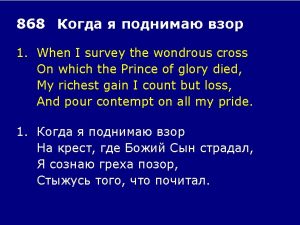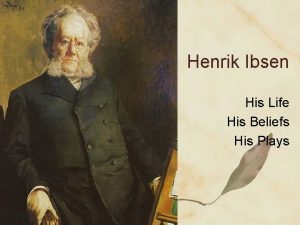Enthalpy Enthalpy Enthalpy His the total amount of












- Slides: 12

Enthalpy

Enthalpy �Enthalpy (H)is the total amount of energy contained within a substance. Included all forms of energy, kinetic, potential… �Very difficult to measure all forms of energy within a substance, therefore a change in enthalpies is measured whenever a change occurs. �∆H = difference in enthalpies as a chemical system changes. (reactants → products)

Enthalpy Changes �By convension: ∆H = (-) for exothermic ∆H = (+) for endothermic

Measuring Enthalpy Changes �Calorimetry can be used to measure enthalpy changes. �If the change in energy of the surroundings can be measured, according to the law of conservation of energy, the systems energy must be equal and opposite. �∆Hsystem = -qsurroundings

Enthalpy of Changes �An isolated system is desired so that the energy of the chemical system and the surroundings is not lost. �A calorimeter is used to perform calorimetry. �A coffee cup calorimeter is used to measure the heat exchanged when substances react in the liquid phase.

Calorimetry �Assumptions: No heat is transferred between the calorimeter and the outside environment (isolated) Any heat absorbed/released by the calorimeter is negligible. Dilute solutions are assumed to have a density and specific heat capacity of pure water. ∆Hsystem = - qsurroundings

Sample Problem �What is the molar enthalpy of solution (dissolving process) of potassium chloride if dissolving a 7. 46 g sample into 100. 0 ml of water causes the water to change from 24. 1 o. C to 20. 0 o. C?

∆Hsol(KCl) = +1. 7 x Or ∆Hsol(KCl) = +17 k. J/mol 4 10 J/mol

Enthalpy Changes �Since there are many different types of changes that can be measured, a subscript is used to indicate which type of change is occuring. (see page 299) �∆Hx where x represents the type of change for 1 mol of the substance.

Molar Enthapy �The enthalpy change associated with a physical, chemical or nuclear change of one mole of a substance. H 2 + ½ O 2 → H 2 O + 241. 8 k. J ∆Hcomb = -241. 8 k. J/mol How much energy would be released if 2. 0 mol of hydrogen were burned?

Molar Enthalpy Recall: n = m/M ∆H = n ∆Hx How much energy would it require to convert 26. 7 g of methanol from liquid to gas? - Calculate the moles of methanol. - Look up the molar enthalpy of vapourization of methanol (page 307)

Homework �Pg 301 #1 -4
 Total amount of living tissue within a trophic level
Total amount of living tissue within a trophic level The total amount of an employee's earnings is called
The total amount of an employee's earnings is called Enthalpy
Enthalpy Activo promedio
Activo promedio Total revenue minus total expenses
Total revenue minus total expenses Total revenues minus total costs equals
Total revenues minus total costs equals Total revenues minus total costs equals
Total revenues minus total costs equals Total revenues minus total costs equals
Total revenues minus total costs equals Thế nào là mạng điện lắp đặt kiểu nổi
Thế nào là mạng điện lắp đặt kiểu nổi Dot
Dot Thế nào là sự mỏi cơ
Thế nào là sự mỏi cơ Bổ thể
Bổ thể Vẽ hình chiếu đứng bằng cạnh của vật thể
Vẽ hình chiếu đứng bằng cạnh của vật thể























